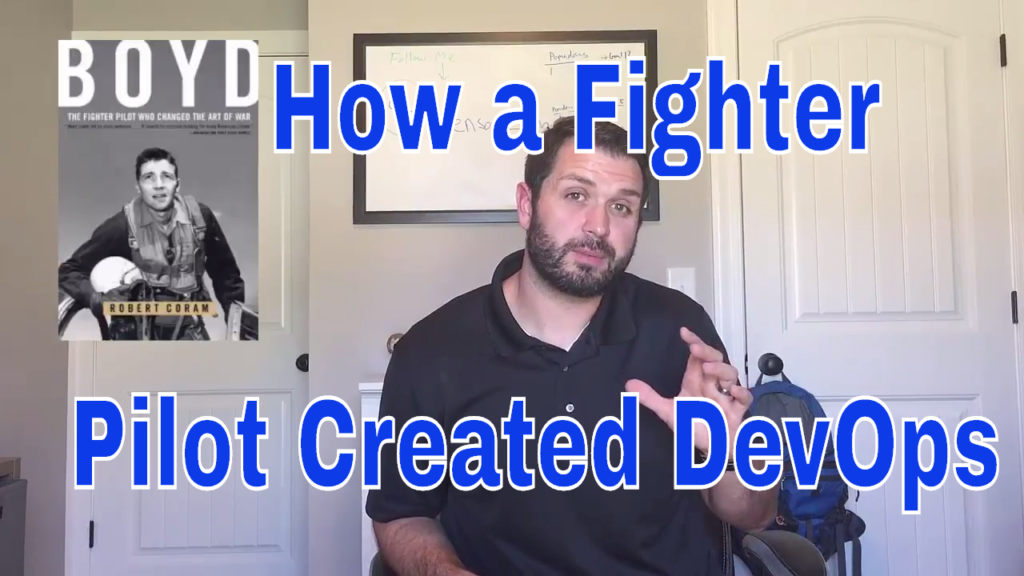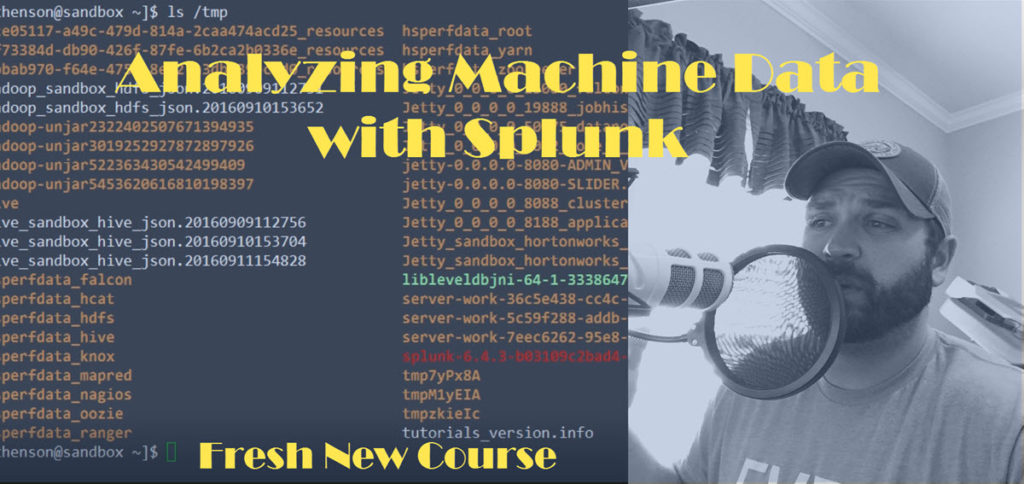Why read a fighter pilot book?
Ever heard of the OODA loop?
It’s the basis for agile development. Observe, Orient , Decide, and Act (OODA) is the feedback loop coined by John Boyd. The point of the loop is to go through these steps repeatedly faster than your foe.
In Agile software development we try to mimic these steps in our iterations of work. First, we find a problem to solve (Observe). Next, we create a user story how to solve the problem (Orient). Then, we add the user story to our development schedule (Decide). Finally, we develop the solution based on the user story (Act). At the end of this loop the feature/enhancement is pushed to production where its usefulness is tested which starts a new feedback loop. The faster we can iterate through these loops the better our applications will be for our users.
Watch the video below to find out more.
Transcript How a Fighter Pilot Created DevOps
Hi, Thomas Henson here with thomashenson.com, and today, we’re going to do a book review on Boyd: The Fighter Pilot Who Changed the Art of War.
Stay tuned, right after this.
Hi, welcome back. Today, I’m doing a book review on Boyd: The Fighter Pilot Who Changed the Art of War. You’re probably thinking, “Okay, wait a minute. This is a fighter pilot book. How is this going to relate to technology, big data, you know, software development?” Let me just say, it absolutely applies. You use it every day, and you probably learned about it in any of your business courses or any of your corporate meetings that you’ve been in.
I’m sure somebody’s referenced something in there called the OODA loop. I’ll talk a little bit about that here in just a second. I did want to tell you how I got into the book.
I got into the book following Ryan Holiday’s, I think it was books, maybe 25 or 20 different books that are biographies that everyone must read. It’s been on that list, and I’ve been making my way through that list. I’ve also seen it recommended a couple different other places. I’ve been wanting to do it, kind of been putting it off.
I probably should have gotten to it a little bit faster. The book is about John Boyd. He was fighter pilot back in, I think started out in World War II. He didn’t really ever see any combat experience there. The book is really good. It’s really about his career and the way that he solved problems.
The way that he approached solving different problems. One of the first things that he did, and was really known for, is he changed the way that fighter pilots and the way that fighter planes are designed, and how they’re measured as well.
He came up with a formula and different way of being able to measure how velocity, and how banking, and some of the other terms that I don’t really understand around fighter pilots and around planes, but just avionics in general.
He came up with a way to change that, and it changed the way that every fighter plane around the world, not just in America, was designed, and how they’re designed still to this day. He totally changed that part.
Another huge part that he changed was, he changed the way that wars are fought. A little bit about war strategy in there, so if you’ve read The Art of War, and some of the other books, he took a lot of that information for a lot of different campaigns throughout the years, researched some of it, and actually came up with a different way to strategize, and to do war fighting.
When you start looking at that, that actually bleeds over into business. He came up with what you’ve probably heard of as the OODA loop. It’s the observe, orient, decide, and act. The OODA loop is what we use in business strategy, but it’s also what we use in agile development.
Jeff Sutherland, who was a fighter pilot, I think in Vietnam. You can read in his agile book, where he actually voices and references the OODA loop in the way that agile development is done, and the way that we solve problems even in software engineering.
You’re probably seen it, too, in a lot of corporate events, and I think it started becoming part of business curriculum in a lot of colleges around the US, sometime in the early ’80s, too, so all from that strategy, John Boyd was the father of that OODA loop and the strategy there, and doesn’t get a lot of credit for it.
I’m not going to spoil too much of it and tell you why he doesn’t get credit, or how it all evolves, but let me just say, I recommend the book. It’s a really good read. It’s probably something you can do in a week, week and a half, if you’re just reading about 30 to 40 pages a day.
I definitely think that anybody should read it, so there’s also some personality things in there too that you can learn from. It’s not just about learning all the things he did, but you can actually, because it follows his career, and it’s a biography of him, you could follow and learn from some of the mistakes that he made, too.
Really good book. Everybody should probably check it out. At least put it on your list and get to it at some point. Learn more about the OODA loop and some of the other things. Make sure you subscribe. I know this is a book review, but if you have any questions around Big Data Big Questions, you can subscribe here, so that you’re never going to miss an episode of that. If you have any questions, make sure to put it in the comments here or go to my website, thomashenson.com, and look for the Big Data Big Questions, and submit the questions there.
Thanks, and I will see you again next time.

